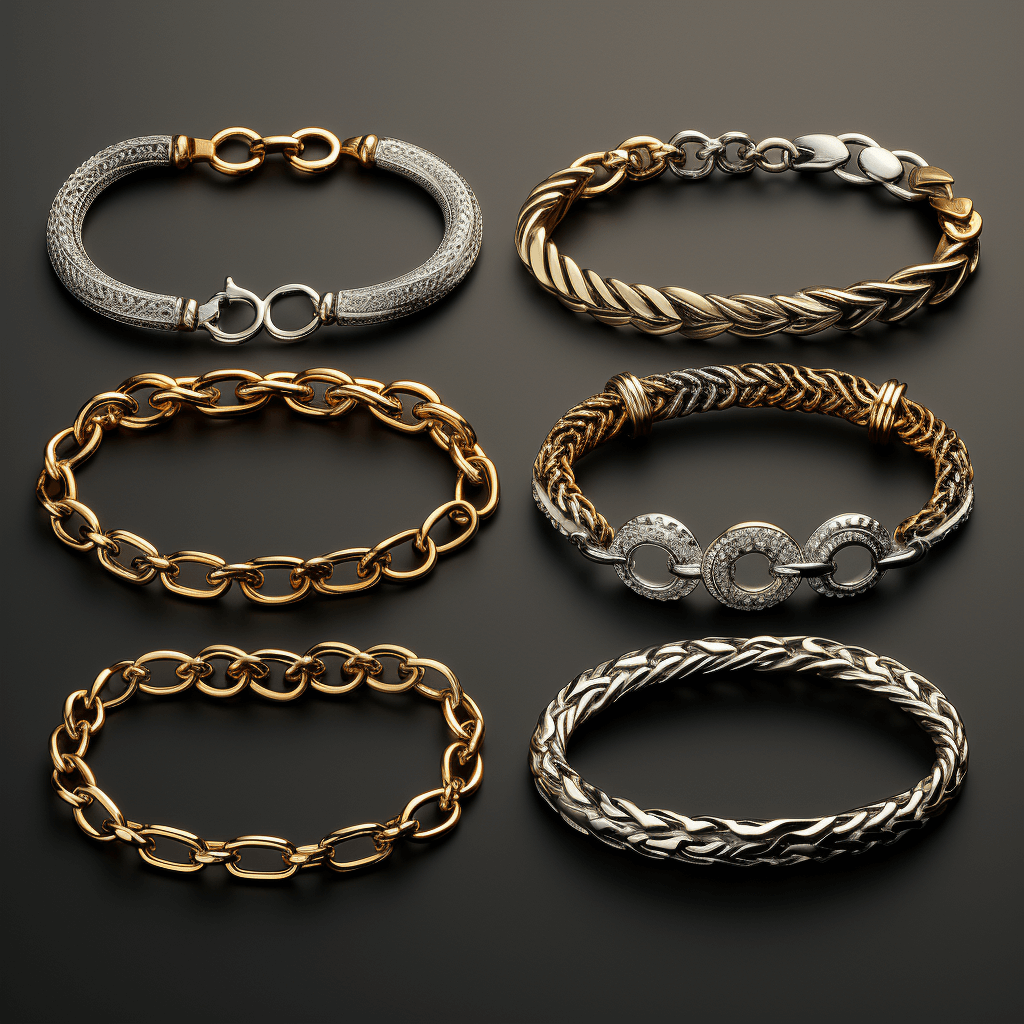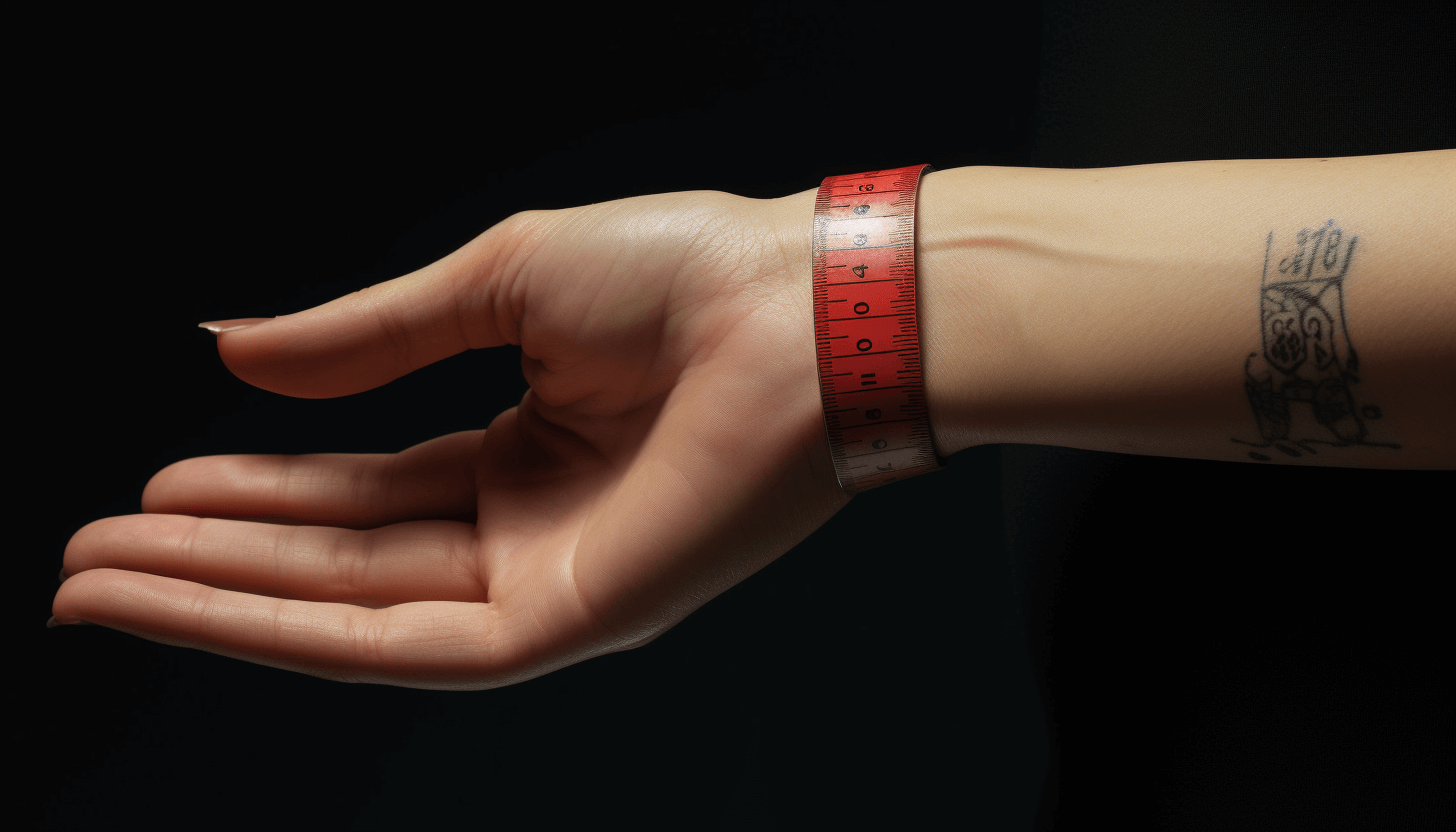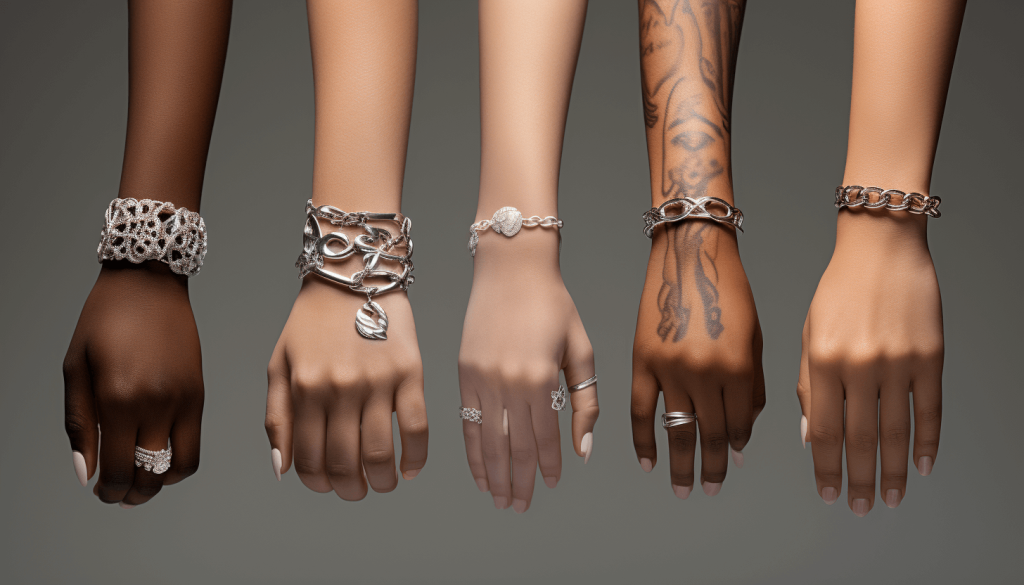Introduction: The Importance of Proper Bracelet Sizing
Whether you’re buying a bracelet for yourself or as a gift for someone else, it’s essential to ensure a proper fit. A bracelet that’s too tight may be uncomfortable or restrict movement, while one that’s too loose could slide off and get lost. Not to mention, the right-sized bracelet complements your style and enhances the elegance of your wrists. In this guide, we’ll help you understand the importance of correct bracelet sizing and teach you how to measure your wrist accurately to find the perfect bracelet size.
Did you know? The average woman’s bracelet size in the U.S. is 7 inches, and the average man’s size is 8 inches. However, wrist sizes can vary greatly, so it’s always best to measure to ensure a good fit.
Understanding the Bracelet Size Chart: Women, Men, and Kids
Bracelet sizes vary depending on the person’s age, gender, and personal preference. Below are the specific bracelet size charts for women, men, and children providing a general guideline for bracelet sizing.
Women’s Bracelet Size Chart
| Size | Inches | CM |
|---|---|---|
| Extra Small (XS) | 5.5″ | 14 |
| Small (S) | 6″ | 15.2 |
| Medium (M) | 6.5″ | 16.5 |
| Large (L) | 7″ | 17.8 |
| Extra Large (XL) | 7.5″ | 19 |
Men’s Bracelet Size Chart
| Size | Inches | CM |
|---|---|---|
| Small (S) | 7″ | 17.8 |
| Medium (M) | 7.5″ | 19 |
| Large (L) | 8″ | 20.3 |
| Extra Large (XL) | 8.5″ | 21.6 |
| 2X Large (2XL) | 9″ | 22.9 |
| 3X Large (3XL) | 9.5″ | 24.1 |
Kids’ Bracelet Size Chart
| Age | Inches | CM |
|---|---|---|
| 4-6 years | 5.0″ | 12.7 |
| 7-10 years | 5.5″ | 14 |
| 11-14 years | 6.0″ | 15.2 |
Please note that these measurements are just average estimates. The best way to ensure a perfect fit is to measure your wrist or the wrist of the person for whom you’re buying the bracelet.
Tools You Need to Measure Your Wrist

Measuring your wrist for a bracelet is a straightforward task that requires only a few basic tools. Here’s what you’ll need:
- A flexible measuring tape: This is the most accurate tool for measuring your wrist. Make sure it has clear markings for inches and centimeters.
- A piece of string or a strip of paper: If you don’t have a measuring tape, a simple piece of string or a strip of paper can be used to wrap around your wrist and then measured against a ruler.
- A ruler: If using a string or paper strip, you’ll need a ruler with clear inch and centimeter markings to measure the length.
- A pen or marker: To mark the measurement point on the string or paper strip if you’re using one.
When measuring, make sure the tool fits comfortably around your wrist. It should not be too tight or too loose. Remember, the goal is to find the most comfortable and secure fit for your bracelet.
How to Measure Your Wrist: Step-by-Step Guide
Now that you have the necessary tools, you can accurately measure your wrist by following these simple steps:
- Position Your Hand: Extend your hand flat, with the palm facing up. It’s important to keep your hand in a neutral, relaxed position—don’t flex or extend your wrist.
- Wrap the Measuring Tool Around Your Wrist: Wrap the flexible measuring tape (or your string or paper strip) around your wrist, just above the wrist bone where your watch or bracelet would normally sit.
- Take the Measurement: If you’re using a flexible measuring tape, read the measurement where the zero end meets the tape. If you’re using a string or paper strip, mark the point where the end meets the rest of the string/paper, then measure the length from the end of the string/paper to your mark using a ruler.
- Record the Measurement: Write down the measurement. If you’ve measured in inches but your chosen bracelet uses a different unit (like centimeters), you can use an online converter to convert your measurement.
Note: When you measure your wrist, make sure the measuring tool is neither too loose nor too tight. It should be able to slide easily over your wrist bone but not up and down your arm.
Now, with the measurement in hand, you can reference your bracelet size chart to find your corresponding bracelet size. Remember, it’s always better to round up to the nearest size if your measurement falls between two sizes. This will ensure the bracelet isn’t too tight.
Tips for Getting Accurate Wrist Measurements

Measuring your wrist might seem straightforward, but there are a few key tips to keep in mind to ensure your measurements are as accurate as possible:
- Measure More Than Once: It’s always a good idea to measure at least twice to ensure accuracy. If the two measurements differ, you might want to measure a third time and take the average.
- Use the Right Tools: While makeshift tools like string and paper strips can work, using a flexible measuring tape designed for body measurements will give you the most accurate result.
- Don’t Measure Over Clothing: Clothing can add extra bulk and affect your measurement. For the most accurate measurement, only measure your bare wrist.
- Take Note of Your Wrist Shape: If your wrist is particularly bony, it might be best to add a little to your measurement to ensure the bracelet isn’t too tight. Conversely, if your wrist is wider, ensure the bracelet size you choose won’t be too loose.
Understanding Bracelet Sizes: The Common Standards
Bracelet sizes are typically expressed in inches or centimeters based on the inner circumference of the bracelet. This measurement corresponds to the size of the wrist it will fit. However, keep in mind that the “fit” can be subjective – some people prefer a loose fit while others prefer their bracelets to fit snugly.
The standard women’s bracelet size is 7 inches, and the standard men’s bracelet size is 8 inches, but sizes can range anywhere from 6 to 9 inches for women and 8 to 10 inches for men. For children’s bracelets, sizes typically range from 5 to 6 inches.
Note: When choosing a bracelet size, remember to consider the bracelet’s style and your comfort. For example, bangle bracelets are meant to slide up and down your wrist freely, while charm bracelets are often designed to fit more snugly.
How to Choose the Right Bracelet Size: Comfort vs. Style
Choosing the right bracelet size can be a balance between comfort and style. While you want a bracelet that looks great, it should also feel good on your wrist.
- For Comfort: A bracelet should fit comfortably around your wrist without digging into your skin or limiting your wrist movements. As a rule of thumb, you should be able to fit one or two fingers between your wrist and the bracelet. To achieve this, consider adding about half an inch to your wrist measurement.
- For Style: The size and style of your bracelet can also make a statement. Larger, looser bracelets can add a relaxed, boho feel to your outfit, while smaller, tighter bracelets can look more sophisticated and polished. Remember, the key is to match the bracelet size and style to the occasion and your overall look.
Adjusting Bracelet Sizes: What Can Be Done After Purchase?
If you’ve purchased a bracelet and it doesn’t fit as expected, don’t worry – you often have options to adjust the size.
- Jeweler Adjustments: Many jewelers offer resizing services. They can usually shorten chain or link bracelets fairly easily. However, be aware that resizing services might not be available for all types of bracelets, such as bangles or cuffs, and there may be a fee involved.
- Add or Remove Links: For bracelets with links, like charm bracelets, you can usually add or remove links to adjust the size.
- Stretching: Some bracelets, particularly bangle styles, can be gently stretched to increase their size. This should be done very carefully to avoid damaging the bracelet.
- DIY Adjustments: For some types of bracelets, such as bead or cord styles, you might be able to make adjustments yourself by adding or removing material.
Note: Always consider whether it’s worth risking damage to your bracelet before attempting any DIY adjustments. When in doubt, consult a professional jeweler.
How Different Types of Bracelets Require Different Sizes
Different bracelet styles can fit differently and may require different sizes. Here’s a quick guide:
- Bangles: Since they must be slipped over the hand, bangles generally need to be larger than other types of bracelets. You’ll need to measure around the widest part of your hand for a bangle, rather than your wrist.
- Charm or Link Bracelets: These typically have an adjustable chain, so they offer more flexibility in size. You’ll usually want to add about 1 inch to your wrist size for a comfortable fit.
- Cuff Bracelets: Cuff bracelets are often adjustable. You can gently squeeze or stretch the cuff for a better fit. For a cuff bracelet, measure your wrist size but consider the gap in the cuff as well.
- Beaded or Stranded Bracelets: These bracelets are often elastic or come with an adjustable cord, allowing them to fit a variety of wrist sizes. However, for a comfortable fit, you’ll typically want these to be about 0.5 – 1 inch larger than your wrist measurement.
Frequently Asked Questions About Bracelet Sizing
What size bracelet fits most?
The average women’s bracelet size in the U.S. is about 7 inches, and the average men’s size is about 8 inches. However, wrist sizes can vary greatly, so it’s always best to measure to ensure a good fit.
How is a bracelet supposed to fit?
A well-fitting bracelet should be comfortable: not too tight that it restricts movement or digs into your skin, but also not so loose that it risks sliding off. As a general rule, you should be able to fit one or two fingers between the bracelet and your wrist.
Conclusion: Enjoy Your Perfectly Sized Bracelet!
Understanding how to properly measure your wrist and interpret a bracelet size chart can ensure that your jewelry is comfortable, secure, and flattering. Whether you prefer a dainty chain, a bold bangle, or an eye-catching charm bracelet, knowing your size will make shopping for bracelets much easier and more enjoyable. Plus, this knowledge will come in handy if you ever want to surprise a loved one with a bracelet gift. Now, with your perfectly sized bracelet, you can confidently wear your style on your sleeve!

